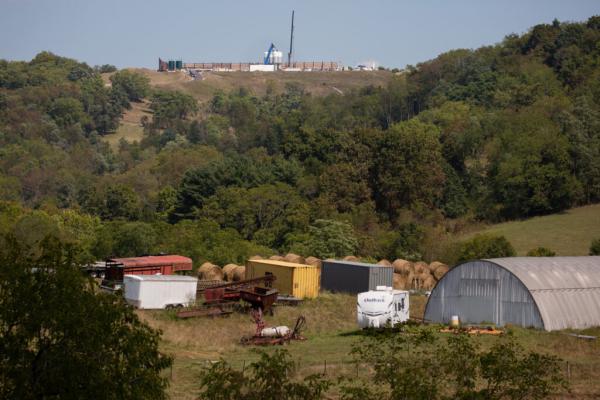Novel climate biostress model and sentinel system seek to track global climate impacts
11:00am By NULLAn interdisciplinary team of scientists at the Advanced Science Research Center at the CUNY Graduate…Billions live in environments that violate human rights, global analysis finds
9:49am By NULLMore than 99% of the world's 7.7 billion people have one or more of their environmental rights…AI data centers projected to strain US energy and water resources by 2030
9:45am By NULLAs the everyday use of AI has exploded in recent years, so have the energy demands of the computing…Commercial weather sensors can help identify city hotspots
8:34am By NULLNeighborhoods close to green parks and bodies of water are cooler throughout the year, according to…New roadmap outlines Australia's potential in novel CO₂ removal to help meet net zero targets
8:30am By NULLCSIRO, Australia's national science agency, has released the Australian Carbon Dioxide Removal…Radioactive pollution still haunts Hunters Point in San Francisco
7:00am By NULLMore than a half century after the U.S. ignited 67 atomic weapons in the central Pacific Ocean, a…COP30: Global nature goals at risk as conservation projects quietly fail
5:00am By NULLAs world leaders begin COP30 climate negotiations in Brazil, an international team co-led by a…Climate's impact on earthquakes: Lake Turkana study highlights connections between tectonics and human evolution
5:00am By NULLLake Turkana in northern Kenya is often called the cradle of humankind. Home to some of the earliest…Amazon poised to host toughest climate talks in years
4:30am By NULLAn odor of oil hung over last year's UN climate conference in Baku, capital of fossil fuel-rich…Typhoon exposes centuries-old shipwreck off Vietnam port
4:21am By NULLSevere coastal erosion caused by Typhoon Kalmaegi exposed a centuries-old shipwreck in Vietnam,…Beauty and fear: The role of emotions in communicating natural disasters
12:00am By NULLNew Zealand—particularly the South Island/Te Waipounamu—is one of the most seismically active…Interactive map shows deforestation drives up tropical temperatures by up to 5°C
Sun 2:33pm By NULLOnline map reveals link between deforestation and rises in tropical temperatures Deforestation is…Super Typhoon Fung-wong makes landfall in Philippines
Sun 2:29pm By NULLSuper Typhoon Fung-wong slammed into the Philippines' eastern seaboard on Sunday, the national…Landmark Paris Agreement set a path to slow warming. The world hasn't stayed on it
Sun 2:28pm By NULLThe world has changed dramatically in the decade since leaders celebrated a historic climate…Why hurricanes rarely kill in Cuba
Sun 11:10am By NULLHours before Hurricane Melissa roared toward Cuba's second-largest city, Santiago de Cuba, the…Deep-sea mining risks disrupting the marine food web, study warns
Sun 8:00am By NULLDrilling for minerals deep in the ocean could have immense consequences for the tiny animals at the…Philippines evacuates hundreds of thousands as super typhoon nears
Sun 4:28am By NULLNearly a million people have been evacuated and floodwaters were rising in the Philippines on Sunday…How countries can be held responsible for staying within new legal climate target of 1.5°C
Nov 8, 2025, 12:10 pm By NULLGlobal emissions need to peak this year to stay within 1.5°C of global temperature rise since…Geopolitics, backsliding and progress: Here's what to expect at this year's COP30 global climate talks
Nov 8, 2025, 11:10 am By NULLAlong with delegates from all over the world, I'll be heading to the United Nations COP30 climate…We studied 217 tropical cyclones globally to see how people died. Our findings might surprise you
Nov 8, 2025, 10:20 am By NULLTropical cyclones—also known as hurricanes, typhoons or storms, depending on their location and…
Welcome to EcoTopical Your daily eco-friendly green news aggregator.
Leaf through planet Earths environmental headlines in one convenient place. Read, share and discover the latest on ecology, science and green living from the web's most popular sites.
Leaf through planet Earths environmental headlines in one convenient place. Read, share and discover the latest on ecology, science and green living from the web's most popular sites.





